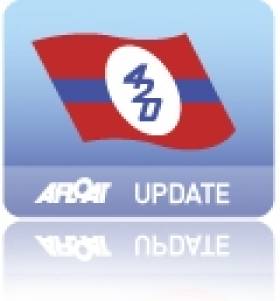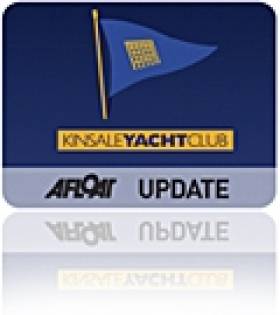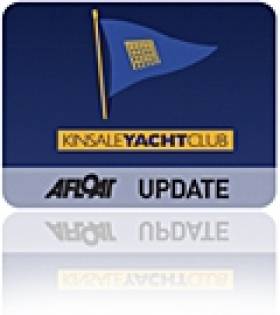Displaying items by tag: Kinsale YC
Quarter Tonners Heading for Sovereigns Cup and ICRA Champs
Up to 25 Quarter Tonners have signed up for Cork harbour's Irish Cruiser (ICRA) National Championships and the Sovereigns Cup in Kinsale – only a week separates the two fixtures. (Latest Sovereigns Cup news here)
The budget-minded class has been back building numbers steadily since 2001 when Peter Morton revived the class on the south coast of England. Now over 40 boats compete in Britain and up to 10 will visit Cork this summer after a successful trial here two years ago.
From June 17th they'll go head to head with a number of hot Irish campaigns that have emerged in the last 12 months, including the host port's "Tiger" (O'Brien, Kenefick and Kenefick), Eamon Rohan's recently refurbished Anchor Challenge and Dún Laoghaire's Supernova, skippered by Ken Lawless.

The crew of Anchor Challenge Complete a gybe. Photo: Bob Bateman
For this year's event, some of these dated 24-26 footers are being pulled from hedgerows and fields rather than building new ones.
Last raced in the 1980s, others are getting the full make-over and have been extensively remodelled for today's IRC handicap rule.
"Budget sailing with five friends, that's the ethos", claims Kinsale skipper Ian Travers about the style of the passe class.
The current fleet contains boats from €6,000 to €30,000, the more expensive boats having extensive optimisation and new sail plans.
It's well within the rules to alter rudders and keels but hull shapes must stay original.
To qualify to race in the Quarter Ton cup, a boat must fall within the old IOR rule or be a production boat derivative. This means many mainstream class-three craft such as Farr 727s, GK24s, Starflash 26s and Boleros all qualify.
Travers reckons therefore a potential Irish fleet could reach 50 boats, if enough owners showed interest.
One boat of particular interest in June will be "Black Fun" a fully refurbished and IRC optimised 1977 Laurie Davidson- designed Quarter Tonner.
Back then she was the top Quarter Tonner in New Zealand but for financial reasons did not make the journey to Finland to compete in the Quarter Ton Cup that year. Now, 34 years later, the current owners are shipping her from New Zealand to compete in this year's cup in Cowes in July but beforehand will compete in both Irish regattas as warm-ups.
And in further good news for the ICRA event a west coast cruiser fleet have confirmed that at least 15 boats will be entering the national championships.
Cork Girls take 420 Dinghy Leinster Title
The National Yacht Club hosted the 420 dinghy Leinster Sailing Championships over the Easter Weekend, attracting twelve boats and visiting crews travelling from Crosshaven, Kinsale, Malahide, Spiddal, Tralee and Wexford.
Emma Geary and Niamh Connolly from Royal Cork YC counted four wins and a second place in the six-race series to win the event convincingly. The girls will be aiming to repeat their success next weekend at the ISA Mitsubishi Youth Nationals in Dun Laoghaire in order to secure a nomination to the 2011 ISAF Youth Worlds, which will be held in Croatia.
Fiona and Patrick Daly of Tralee Bay SC finished second overall with a very consistent four 2nds and two 3rds Aodh Kennedy/Daniel Browne (Kinsale YC) who were third overall and Richard D’Esterre/Peter Stokes (CYS/Royal Munster) also recorded race wins.
Alanna Lyttle and Cian Guifoyle (Royal St.George YC) narrowly defeated fellow newcomers Emily Jones and Liadh Conway (Wexford Harbour BC) for the Silver Fleet Trophy.
PRO Larry Power and his mark laying teams provided excellent racing in sometimes challenging wind conditions while Sandra Moore ran the race office throughout the weekend.
Full results available here.
Photography from 2007 Soveriegn's Cup
A remarkable performance throughout all 8 races by John Twomey and his team aboard Shillelagh resulted in a clear victory in division 3 IRC by a margin of some 12 points to swoop the coveted Sovereign's Cup.
Dave O'Sullivan served as Regatta Director for Sovereigns Cup 2007 in Kinsale Yacht Club.
Bob Bateman's photos of Sovereign's Cup 2007 are BELOW.
Ten Days of Racing on the South Coast
The ICRA National Championships is being staged at Royal Cork YC from Friday 17th to Sunday 19th June and the Sovereign's Cup at Kinsale YC from Wednesday 22nd to Saturday 25th June.
Dublin boats heading south for these events can race down to the event as part of the Dun Laoghaire to Dingle Race (it's the tenth anniversary race) from the National Yacht Club starting on Saturday, June 11th next.
Entry form for ICRA and Notice of Race available to download below.
All Left to Play for at Dragon South Coasts (Photos here!)
By the start of the first race it had built to 15 knots with a touch of north and, with the shelter provided by the Old Head, the sea was much calmer than
that experienced on Friday. There were slight shifts in direction and gusts recorded at 23 knots but using local knowledge of the harbour acquired since
birth, Cameron Good, Simon Furney and Henry Kingston on Little Fella (IRL211) lead the fleet by a considerable margin from Andrew Craig, Brian Matthews and Mark Pettitt on Chimaera (IRL192) and James Matthews with brothers Rick and Rob Johnson in the 'Kinsaled' Diva (IRL210). James retired from Dragon sailing at the tender age of 36 and following the day's exertions, now aged 38, wondered how 'they can they do this for five days?'
Race four again started in ideal conditions but the gusts, which felt much stronger than recorded, heralded a 35 degree shift midway through the first beat and PRO Alan Crosbie and his race management team reacted quickly to reset the course. Andrew Craig's Chimaera recorded the bullet but the finish was so tight between Neil Hegarty's Phantom (IRL176) with Peter Bowring and David Williams, and James and the Johnsons Diva that each acknowledged the others victory.
The top three ordered has altered with Chimaera overtaking Jaguar for the top of the leaderboard and Little Fella maintaining third position. Diva (James and the Johnsons) has overtaken Garry Treacy's Dublin Bay for fourth position.
There are two further races scheduled for today and the eventwill have a new Principal Race Officer for the final third of the series in the very experienced John Godkin. The overused adage that 'it's all left to play for' could not be truer on this occasion, as the discard will be applied on completion of Race 5 of the series and the forecast is set to allow two races.
Day Two photos by Afloat's Bob Bateman
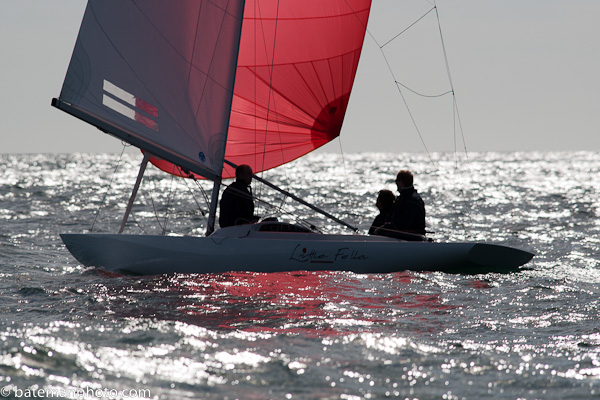
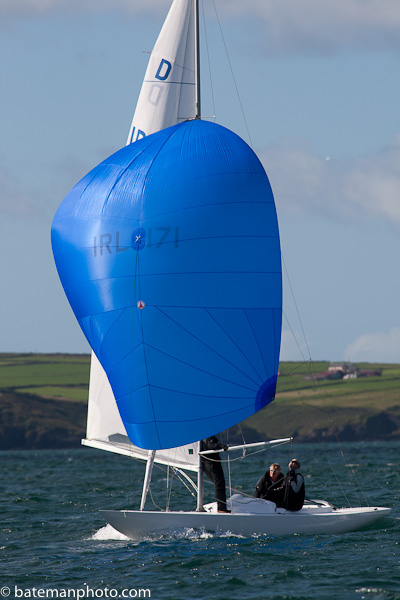
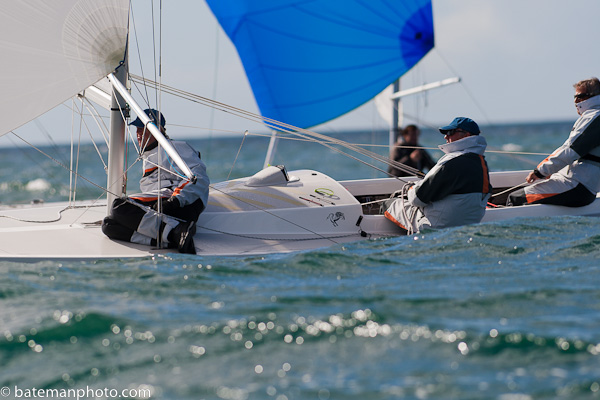
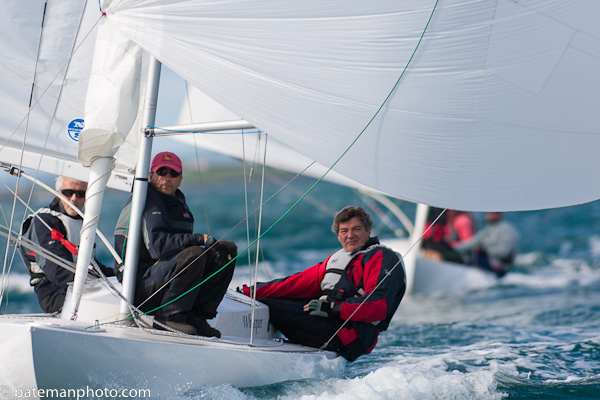
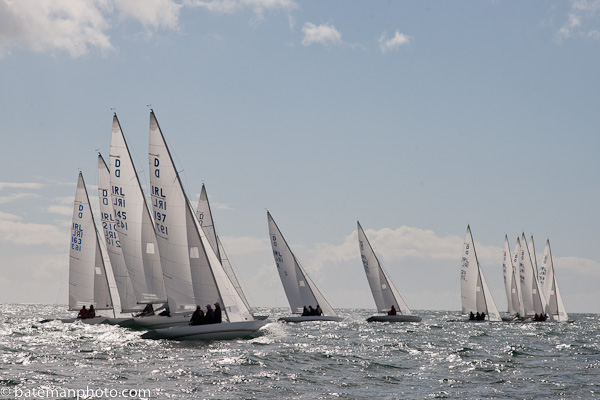
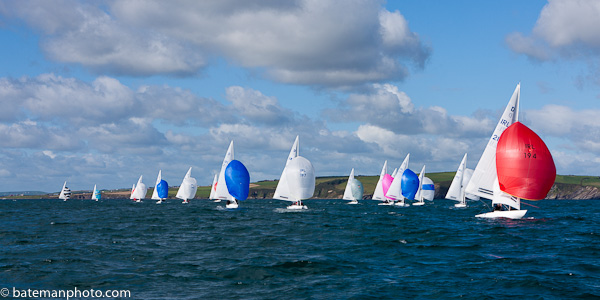
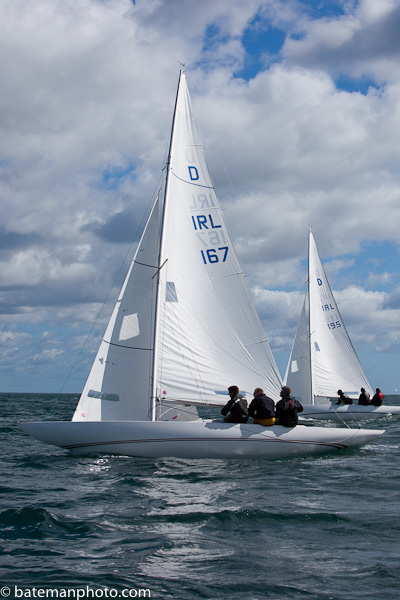
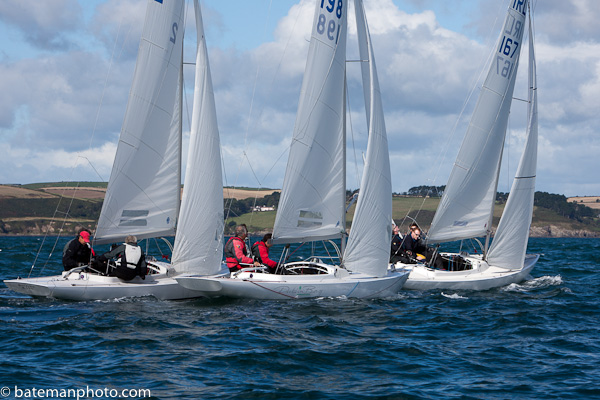
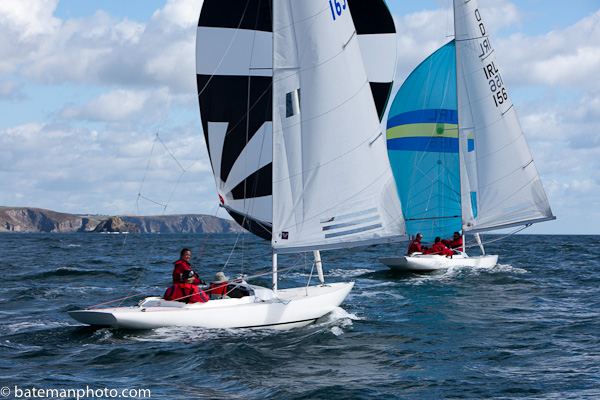
Kinsale Welcomes Round Britain & Ireland Fleet
The Shetland Round Britain & Ireland fleet have begun arriving in Kinsale for the fiirst of their mandatory 48-hour stopovers in the 1,000-mile circumnavigation of the British Isles. With surfing conditions between Plymouth and the south coast of Ireland, the leading boats pulled into Kinsale last night, with others being stranded off the coast of Cork in light winds as the centre of a weather system passes overhead.
A message posted by the Race Office in Plymouth this morning reads:
Kinsale has had a busy night, with 41 of the fleet now safely in and 15 still out there.
Those still out there, now have the centre of a low pressure system over them and are experiencing winds as light as 4 knots and from a changing direction. At midnight the wind was coming from 240 degrees and by lunchtime it is expected to be from 340 degrees. It is predicted to continue to veer to 025 degrees before last light tonight. The good news is that the wind will gently start to build from lunchtime to approximately 16 knots in the early hours of the morning.
Blog and forum posts from the race are HERE on the official site, while the race tracker is HERE.




























